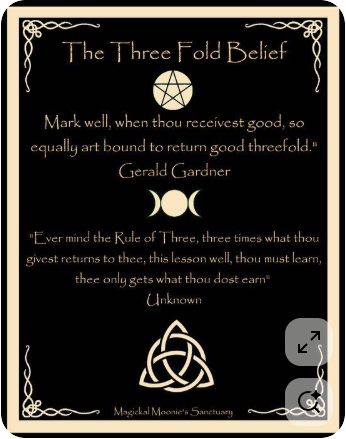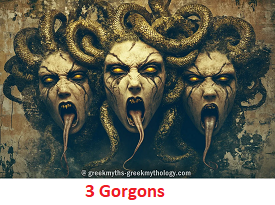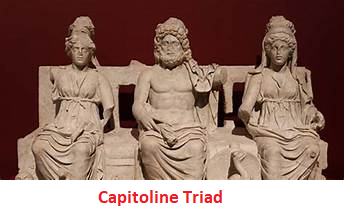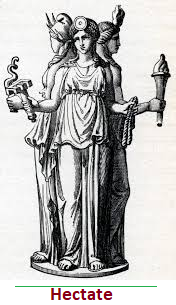Three and Counting ...1
A Study of Repeating 3s
| Page 1 | Page 2 | Page 3 | Page 4 |
| More Threes Examples | AI 3s and 2s | ||
3s Enthusiasts as of June 6th, 2025
For those interested in the collection of patterns (in one or more subjects) which may initially or later be found to exhibit some repeating number pattern, there are three main arguments/disparagements sometimes levied against such collectors: Superstition- Numerology- Obsessive Compulsive Disorder
1) It is an activity involving Superstition.
- For example, Superstition is described as the A) belief, B) half-belief, or C) practice for which there appears to be no rational substance. Those who use the term (against others) imply that they have certain knowledge or superior evidence for their own a) scientific, b) philosophical, or c) religious convictions (and doesn't involve superstition). An ambiguous word, it probably cannot be used except subjectively. With this qualification in mind, superstitions may be classified roughly as 1) religious, 2) cultural, and 3) personal.
The number 3 holds both lucky and unlucky significance in superstitions, most notably the "bad things come in threes" saying, whose origins are debated but may stem from military folklore, and the "third time's the charm" principle, which sees 3 as a number of completion and success. While the concept of bad t things happening in groups of three is likely a product of human biases like confirmation bias, or some psychological phenomenon, such as apophenia (finding patterns in random events) the number 3 is also widely considered positive due to its cultural and religious symbolism, representing perfection, completion, and the divine.
The "Bad Things Come in Threes" Superstition:
- Origins: The exact origin is unknown, but theories include:
- Military Folklore: The superstition "three on a match" warned soldiers against lighting three cigarettes from the same match during the Crimean War, believing it attracted snipers.
- Russian Funerals: Some link it to Russian funeral rituals where three altar candles were lit.
- Appalachian Beliefs: The belief has roots in Euro-American folklore, where the concept of the Holy Trinity and other trilogies influenced seeing tragedies in threes.
Positive Symbolism of the Number 3
2) It is an activity of engaging in Numerology.
- Three is often seen as the number of perfection and completion, representing a whole cycle or full story.
- Cultural and Religious Significance:
- Christianity: The Holy Trinity (Father, Son, and Holy Spirit) elevates the number 3 to something sacred.
- Norse Mythology: Three Norns, the three realms of existence, and multiple mythical groups with three items highlight its importance.
- Greek Mythology: The three Fates and the three main gods (Zeus, Poseidon, and Hades) demonstrate its deep roots in ancient cultures.
- Chinese Culture: The number 3 (san) sounds like the word for "life" (sheng), making it a lucky number.

3) It is an activity exhibiting a possible Obsessive Compulsive Disorder (OCD).
- For example, (AI rendered): Numerology is the use of numbers to interpret a person's character or to divine the future. The theory behind numerology is based on the Pythagorean idea that all things can be expressed in numerical terms because they are ultimately reducible to numbers. Using a method analogous to that of the Greek and Hebrew alphabets (in which each letter also represented a number), modern numerology attaches a series of digits to an inquirer's name and date of birth and from these purports to divine the person's true nature and prospects.
- The three most important (Master) numbers in numerology are 11, 22, and 33. These possess intensified vibrations and potential for great influence and elevation in a person's life, unlike standard numbers that are reduced to single digits during calculations.
- Binary code of computers might well be viewed as a type of Numerology because of its pairing symbols to zeros and ones.
- A "Cloaked" or hidden Numerological orientation may exist in the collections of those who assign more publicly disclosed interest in a given topic such as collecting one or another toy (such as soldiers, cars, etc...), sports cards, movie memorabilia, etc., and yet privately they engage in repeated counts of separate and/or total items much like an Ebenezer Scrooge repeatedly counting, recounting and then counting again his money.
- For example, (AI rendered): An obsessive-compulsive disorder (OCD) involving the number three manifests as compulsions, such as counting steps or locking doors multiple times, driven by obsessive thoughts that a specific number (like three) is special, safe, or the "right" number. Individuals with this type of disorder, known as arithmomania, may believe something bad will happen if actions aren't performed in multiples of three or end on the number three. This is a form of OCD related to magical thinking and can be addressed through professional treatment like Cognitive Behavioral Therapy (CBT).
- Obsessions:
- Intrusive thoughts about the number three, often assigning it special meaning or making it feel "lucky," "good," or necessary to prevent harm.
- Compulsions:
- Repetitive behaviors, like counting in threes, performing actions a certain number of times (e.g., locking the door three times), or other rituals associated with the number.
- Counting steps in sets of three
- Checking a stove or lock three times
- Performing other tasks a certain number of times to end on a "good" or "safe" number
- Feeling that performing actions in multiples of three will prevent negative consequences

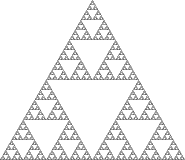
|
"Threes" discussions about Literary-focused contexts typically exclude examples from various Science-defined subjects; and therefore sets the stage and scripted dialogue which instigates a stark absence for any initial and further consideration of this very important Anthropological, Linguistic, Psychological, and Sociological Phenomena; thus resulting in a misunderstanding (and the creation of false assumptions) about the recurrence of threes as an expressed cognitive pattern (among others) that continues to be repeated in Multiple contexts... as well as why it is repeatedly absent from other contexts. Its absence is as much a telling point about human cognitive development and application as is the recurring presence of "threes" in its multiple forms and the symbology being employed. It's importance becomes magnified into a greater clarity when we:
- Contrast it with the histories of Monism, Duality, and Plurality.
- Identify and consciously acknowledge the presence of a 1-2-3 maturational development sequence.
- Become aware of the repeated mis-labeling of the 3-to-1 ratio as a "four" (quaternary, quaternion, etc...) pattern.
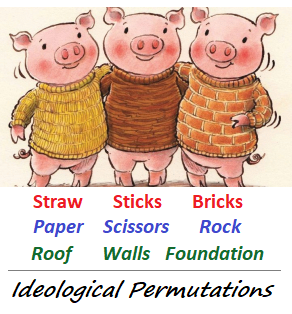
|
List continues here: More Threes Examples
Origination: Friday, June 6th, 12:48 AM
Date of initial posting: Friday, June 6th, 5:27 AM
Updated Posting: Tuesday, Sept. 2nd, 2:24 PM
Contact: herbobuckland(-at-)hotmail.com


